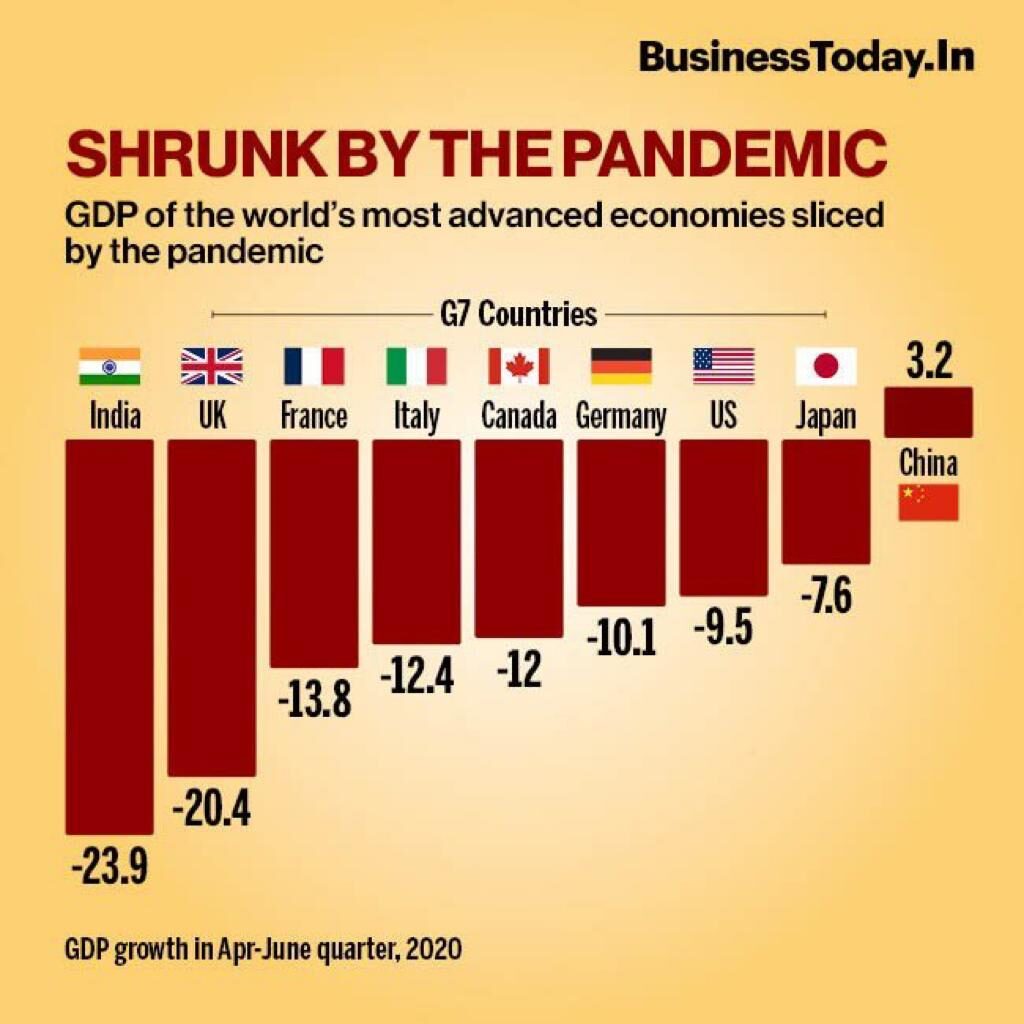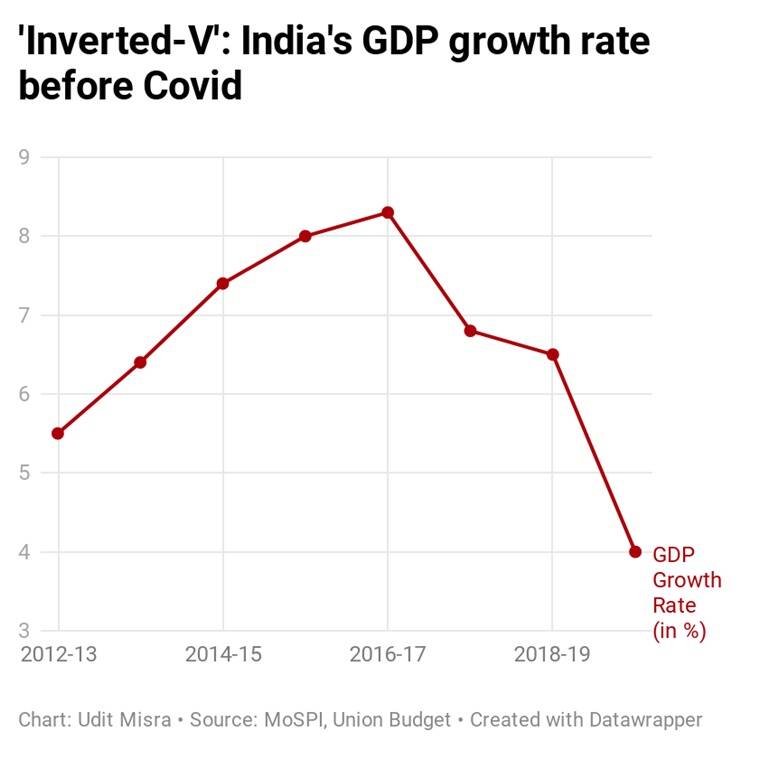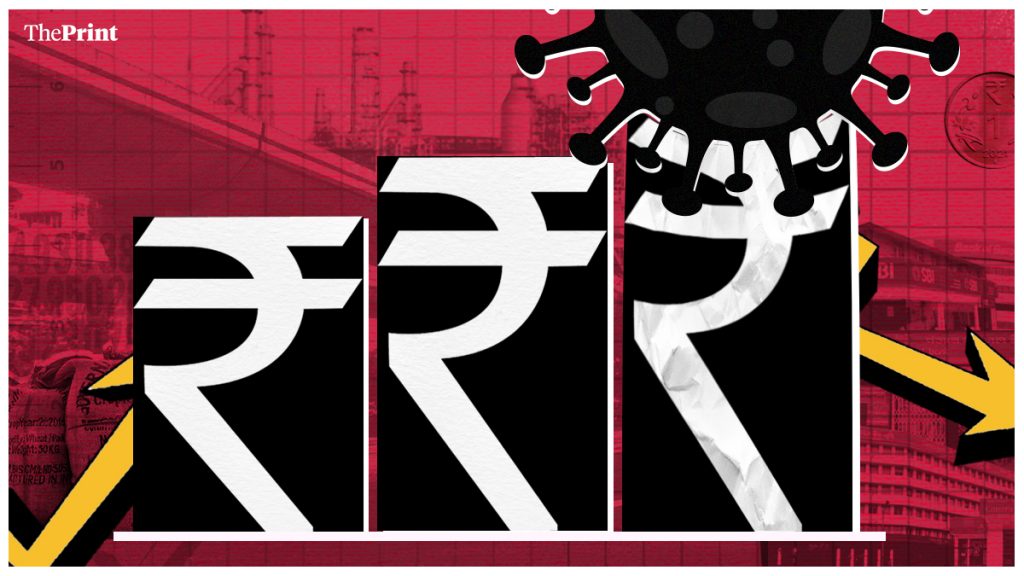|
Getting your Trinity Audio player ready...
|
Hey Readers! Recently India’s gross domestic product (GDP) shrank 7.3% to ₹135.13 trillion in 2020-21. This is the worst performance of the Indian economy in any year since Independence. So today I’ll be talking about the main reasons behind the economic fall. Click the button down at the end of the post to listen to the article!
In 2020-21, India’s gross domestic product (GDP) dropped by 7.3 percent to ₹135.13 trillion (in real terms adjusted for inflation). In 2019-20, it was ₹145.69 trillion. GDP is a measure of a country’s economic size, while inflation is the pace at which prices grow. This is the worst year for the Indian economy since the country’s independence. In 1979-80, India’s GDP contracted for the first time. During that year, when global oil prices were at an all-time high, the economy shrank by 5.2 percent. The main reason for the shrinkage this time was the negative economic impact of the spread of the Covid-19 epidemic.
Let’s take a look at this point-wise:

- One way to calculate GDP is to combine private consumer expenditure or the money you and I spend on purchases, with government expenditure, economic investments, and net exports (or the difference between exports and imports). In India, private consumption expenditure typically accounts for 55-60% of the overall GDP. Private consumption fell by 9.1 percent in 2020-21. This is a significant reduction. It was capped at 2.2 percent even in 1979-80. It’s logical that customers cut back on their consumption during a pandemic year. Individuals have lost their employment. The worry of losing their employment tormented many others. Families had to spend a lot of money on medical crises and other things. Worryingly, overall consumption expenditure in 2020-21 was just 3.1 percent higher than in 2017-18, at $75.61 trillion. The economy has regressed three years in terms of consumption. It also indicates that India’s economic development was decreasing even before the pandemic hit. This is an important factor to keep in mind.
- When individuals are cutting back on their spending due to a pandemic, it’s only natural for businesses to hold off on expanding. The amount of money invested in the economy fell by 10.8%. This is logical, as it makes no sense for businesses to expand when their current capacities aren’t being fully exploited.
- When both individuals and businesses are cutting down on spending, the government tends to spend more to re-energize the economy and re-start economic activity and growth. Government spending increased by only 2.9 percent in 2020-21. In 2019-20, it had increased by 7.9%. Towards the end of 2019-20, in February and March, the pandemic began to spread through India. Given this, the year 2019-20 was largely a non-pandemic year. In 2019-20, government spending increased higher than in 2020-21. To some extent, this is logical, given how difficult it is for even the government to spend money in the midst of a pandemic.

- Another method to look at GDP is to look at the value-added by different industries. The services sector, which accounts for over half of the Indian GDP, shrank by 8.4%. The remainder of the economy’s non-service sector shrank by 6.1 percent. This is understandable because the majority of services must be provided in person, which is bound to suffer in the middle of a pandemic when lockdowns, curfews, and quarantines are the norm. The fact that the overall value added by services in 2020-21 was 67.54 trillion, practically identical to the value generated in 2017-18, is concerning. This essentially means that the epidemic has caused a three-year delay in the growth of India’s services economy.
- The one ray of hope in all of this is that the GDP increased by 1.6 percent from January to March 2021. The question now is what will happen in 2021-22. Most analysts predicted growth of 11-13 percent in 2021-22 until early February when the second wave of covid hadn’t really hit. They have now reduced their growth expectations to roughly 9-10 percent. Of course, this is presumptively based on the fact that there will be no third wave of covid. Furthermore, the full economic impact of the second wave of covid has yet to be seen in economic data, but it will in the coming months. As a result, growth predictions are likely to be revised downward.

It’s important to remember that the second wave was far larger and more destructive than the first. Many families have spent all of their savings to combat the pandemic. A lot of other people’s families are in debt. Those who haven’t been directly affected by the second wave are worried about the possibility of a third wave and are putting money aside to prepare for it. Also, during the initial wave, rural India was largely unaffected.
This time, though, such is not the case. And, given the lack of a reliable data collection system, determining how terrible the situation is in rural India is challenging. In this environment, consumer spending, which accounts for the majority of India’s GDP, is likely to remain stagnant. Furthermore, state governments are wary of being bitten twice and will be hesitant to open their economies swiftly because they do not want covid cases to resurface. More importantly, they are terrified of the third wave. The services sector will continue to be vulnerable in this scenario.
To summarise, many experts predicted that the GDP for 2021-22 will be higher than the GDP for 2019-20 (145.69 trillion) before the year began. They anticipated that the Indian economy would recover to its pre-pandemic state. However, it appears that this will not be the case in 2021-22. We’ll have to wait until 2022 or 2023.
I hope you know the reason behind the contraction and found this post interesting as well as knowledgeable! Let me know in the comments. Stay tuned for the upcoming posts!
This information is correct and factual to the best of the author’s knowledge, but it is not intended to replace formal, customized advice from a competent professional. This content is not plagiarized, and it is not intended to offend anyone’s feelings.


